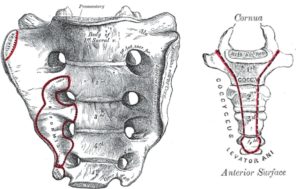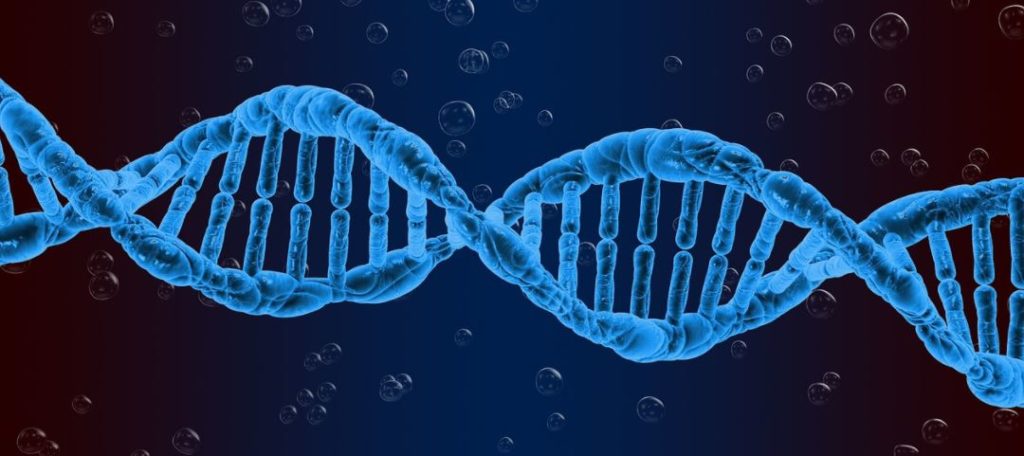The Bone of Resurrection and the City of Immortals
This week’s parasha, Vayetze, begins with Jacob’s famous vision of the Heavenly Ladder. This occurred at a place called Beit-El (literally “House of God”), which our Sages identified with the Temple Mount, where the House of God would be built in the future. The Torah makes sure to point out that the place was originally called “Luz” (Genesis 28:19). The same word appears one more time in this week’s parasha, when Jacob stimulates his sheep to produce different spots, and uses luz as a visual cue for them (Genesis 30:37). Rashi comments that luz is a type of nut, and says that in (Old) French it is called “coldre”. The Old French Anglo-Norman Dictionary defines “coldre” as a hazelnut. In Modern Hebrew, egozei luz refers to hazelnuts, too. Alternatively, it may refer to an almond, as the Midrash (Eichah Rabbah 12:5) says:
“…and the almond shall blossom” (Ecclesiastes 12:5) Rabbi Levi says this refers to the luzof the vertebrae. Hadrian (may his bones be crushed and his name blotted out) asked Rabbi Yehoshua ben Chananiah: “From what will man ‘blossom’ in the future?” He replied: “From the luz of the vertebrae.” He said to him: “Prove it to me.” [Rabbi Yehoshua] had one brought; he placed it in water but it did not dissolve; he put it in fire, but it was not burnt; he put it in a mill but it was not ground. He placed it on an anvil and struck it with a hammer; the anvil split and the hammer was broken but all this had no effect on the luz.
The wicked Roman emperor Hadrian (who crushed the Bar Kochva Revolt, during which Rabbi Akiva was executed, among countless others) once questioned Rabbi Yehoshua as to how people could be resurrected in the future if their bodies completely decompose. Rabbi Yehoshua answered that there is a special, tiny, nut-like bone in the human body, along the vertebrae, that is indestructible. From this bone, God will rebuild the entire person. Anatomically-speaking, which bone is this?
According to some opinions, it is the very first bone at the top of the vertebrae, at the base of the brain, the one known as the atlas bone, or more scientifically, C1. This is where the knot of the head tefillinlies. Others say it is the bone that protrudes at the back of the neck, or C7. Others still hold that it must be the sacrum at the bottom of the vertebrae. The sacrum only forms in adulthood through the fusion of the bones S1-S5. This roughly corresponds to the time that a person receives their higher soul, the neshamah (for more on this, see ‘A Mystical Map of Your Soul’).
Interestingly, the term “sacrum” actually comes from the same root as “sacred”. The ancient Greeks called it hieron osteon, the “holy bone”. This is mainly due to its association with the reproductive organs, and therefore fertility, blessing, and new life. The Greeks probably got it from the ancient Egyptians, who similarly venerated this bone. In Egyptian mythology, the deity Osiris was killed and dismembered by his brother Set. Osiris’ consort, Isis, found his djed, the “vertebrae” or, more specifically, the sacrum bone, and resurrected him from it. Osiris went on to become the Egyptian god of resurrection, rebirth, and the afterlife. Thus, we see that even in the most ancient human myths, the sacrum bone is already associated with resurrection.
The Zohar (I, 137a, Midrash HaNe’elam) calls the bone of resurrection betuel rama’ah, and says that it resembles the head of a snake. The sacrum does indeed resemble the head of a snake. Having said that, the sacrum is quite large, whereas the luz is supposed to be nut-like, the size of a hazelnut or almond (which also resembles the head of a snake). Therefore, the luz is more likely to be, not the sacrum, but the bone beneath it, the coccyx. It is small, almond-like, and looks like a snake-head, too. It is tough, and doesn’t actually serve a distinct anatomical purpose. People who have their coccyx removed for medical reasons function just fine, since it is not an anchor point for any muscle or tendon. The coccyx is essentially just a remnant of the embryonic tail.
That is important because the coccyx is one of the first pre-bones to form during gestation. There is something deeply symbolic about God resurrecting a person starting from this bone, since a newborn baby similarly begins its development from this point. Humans are biologically classified as deuterostomes, literally “second mouths”, because the very first orifice that forms in an embryo will become the anus. The coccyx is that bone right atop the anus. (Organisms that are protostomes, meanwhile, form their mouth first, then their anus.)
That luz is the coccyx can be confirmed indirectly through a Talmudic passage (Berakhot 28b):
Corresponding to what were the eighteen blessings [of the Amidah] instituted? Rabbi Hillel, son of Rabbi Shmuel bar Nachmani, said: “Corresponding to the eighteen mentions of God’s name that King David said in [Psalm 29].” Rav Yosef said: “Corresponding to the eighteen mentions of God’s name in the Shema.” Rabbi Tanchum said that Rabbi Yehoshua ben Levi said: “Corresponding to the eighteen vertebrae in the spine.” Rabbi Tanchum said that Rabbi Yehoshua ben Levi said: “One who prays must bow until all these vertebrae in the spine protrude.”
Rabbi Yehoshua ben Levi held that the eighteen blessings in the (original) Amidah corresponded to the eighteen vertebrae along the back, meaning the 12 thoracic bones, the 5 lumbar bones, and the sacrum. (The 7 cervical bones at the top of the vertebrae are in the neck.) These back bones are the ones that protrude when a person bows. The origin of the practice of bowing during the Amidah is this Talmudic teaching. However, today the Amidah has a 19th blessing. Which bone does this correspond to? Naturally, to the last remaining bone in the spine, the coccyx! This is what the Talmud says further on in the passage, identifying the 19th blessing with the nineteenth, “smallest vertebrae”. (The ArtScroll Schottenstein Talmud cites commentaries here that directly identify this bone with the luz.)
It all comes full circle, for the 19th blessing was instituted to combat the spread of the minim, various sectarians and Jewish off-shoot groups. The two main ones were the Christians and the Sadducees. In fact, the Vilna Shas text of the Talmud has the word tzdukim (“Sadducees”) here, not minim. Recall that the Sadducees rejected the Oral Torah, and therefore did not believe in a Resurrection of the Dead. How fitting then, that the bone of resurrection corresponds specifically to the blessing against those who denied the resurrection!
Finally, the coccyx is the last and 26th bone in the adult vertebrae. This is, once again, a perfect correspondence, for 26 is the numerical value of God’s Ineffable Name.
City of Immortals
There is a very interesting Midrash that speaks of the city of Luz as a place where the Angel of Death had no dominion (Beresheet Rabbah 69:8). It was also the place where, apparently, Israel would get its tekhelet, the special blue dye used for colouring tzitzit and Temple fabrics. Like the luz bone, the city of Luz was indestructible and unconquerable. The people that lived there were immortal, and if they were finally tired of life and wished to die, they had to leave its walls.
This is a peculiar Midrash and, at first glance, defies logic. The Torah tells us that Luz was Beit-El, the site of the future Temple. There was no immortal city on Mount Moriah! The Midrash does go on to say that Luz was, of course, concealed. It was called Luz because its location was signified by a hazelnut tree that stood at the entrance of a hidden cave. One who made it to that cave, “through the luz”, and followed it to the end would reach the city of Luz. Practically, no one could ever see or enter this mystical city.
Rabbeinu Behaye comments (on Genesis 28:19) that the name of the city of Luz comes from luz hashidrah, that vertebral bone, the coccyx. He says that just as this bone is the origin of resurrection, the site of Luz is the origin of Creation (as is well-known, Jerusalem is the “navel of the Earth”, the centre of the universe, the point from which God began His work). And just as the luz bone will be the point from which a person will be renewed, the future world will be renewed from that site of Luz, meaning the Temple Mount.
The Zohar (I, 214b) solves the mystery for good, saying that Luz is actually the name of the Supernal Jerusalem. As the Talmud describes (Chagigah 12b), there is a Heavenly Jerusalem, complete with a Heavenly Temple, with the archangel Michael serving as kohen gadol. This is why Luz is an immortal city: it is the immortal, Heavenly Jerusalem! The mystical gateway to this Jerusalem is from a hidden place on the Temple Mount—no wonder that Jacob saw a Ladder to Heaven there! (According to one tradition, the forthcoming Third Temple will not have to be rebuilt at all, but will simply descend from the Heavenly Jerusalem.)
Perhaps this might also solve another problem: the coccyx is not indestructible. It does decompose like any other bone. So how could it be the bone of resurrection? What if the “luz bone” is simply referring to the place Luz, the portal through which souls will re-enter this world when the time for resurrection comes? Indeed, the Zohar says in another place (I, 69a) that God will form the bodies of the deceased from the earth, into a dough-like mass, then shape their body parts before breathing in their souls (see also Zohar III, 222a). Here, the Zohar does not mention the luz bone at all.
The above Zohar is somewhat reminiscent of a science-fiction cloning procedure. First, there is a dough-like lump of stem cells; then, these stem cells are differentiated into various body parts. Today, scientists have already succeeded in transforming stem cells into various organ tissues, though we are nowhere near cloning entire bodies, nor are we capable of infusing them with souls. The key to all of this is DNA, which brings us to our concluding point:
If we were to regenerate ancient human bodies, scientifically-speaking, we would just need their DNA, the genetic code. The wonderful thing about DNA is that, like the description of the luz bone, it is quite “indestructible”. DNA will hold its structure in water. While high heat will denature DNA, when it is cooled again, the DNA will recombine back into its shape. (We use this important property of DNA when amplifying it for various genetic tests, forensics, or even a COVID test.) All in all, DNA is an incredibly stable molecule. The Zohar tells us that luz is supposed to resemble a snake, and a DNA chain also resembles a snake in its own way. Long ago, Rabbi Aryeh Kaplan already proposed that perhaps there is a connection between luz and DNA, and that science will have at least something to do with the approaching Resurrection of the Dead.
Shabbat Shalom!




1 comment:
So interesting. Fascinating. Except for the last paragraph or so when the author puts in scientific explanations. That only helps the scientists and those who do not believe understand the possibility of resurrection. Of course, resurrection cannot be done by science/man.
This will be one of the many miracles that G-D will perform after the coming of Moshiach tzdkeinu!
The arrogance of man has gone too far in many instances and only backfires when it crosses the line.
Yosef
Post a Comment